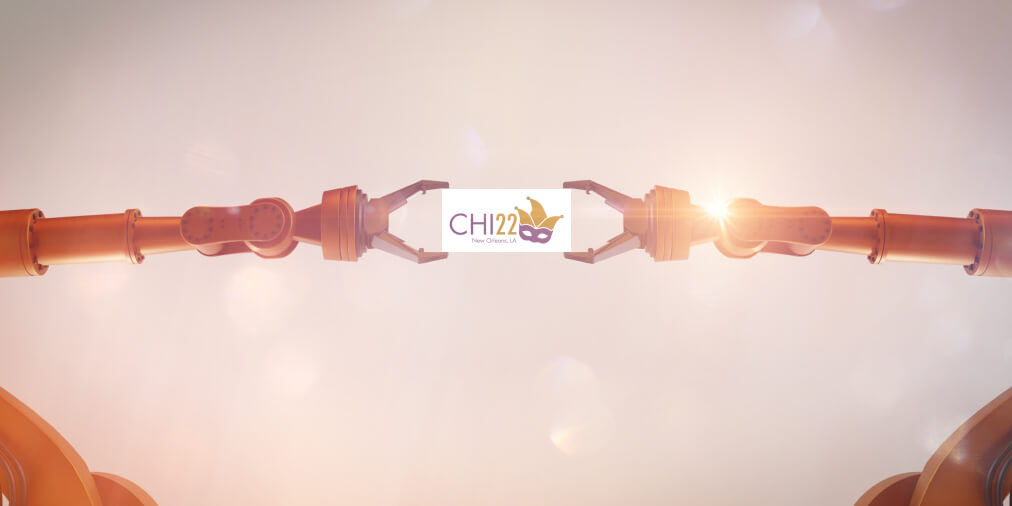ETH Zurich presents robotic fabrication tech at CHI2022


At the CHI2022 conference in New Orleans last week, Swiss public research university ETH Zurich shared the findings of “Robotic Plaster Spraying,” a PhD project conducted from 2018 to 2022 by Gramazio Kohler Research and a team of collaborators led by Selen Ercan, exploring new possibilities in the robotic application of plaster. Though the means are scientific, the results are pure art.
“The ACM CHI Conference on Human Factors in Computing Systems is the premier international conference of Human-Computer Interaction,” reads CHI2022’s site. The event “annually brings together researchers and practitioners from all over the world and from diverse cultures, backgrounds, and positionalities, who have as an overarching goal to make the world a better place with interactive digital technologies.” CHI2022 took place April 30th – May 5th.
There, the team from ETH Zurich presented “Robotic Plaster Spray,” a research project that sought to create an on-site construction system “capable of performing continuous robotic plaster spraying on building elements, without the need for additional formwork or tools used in conventional plastering to produce textural patterns and volumetric formations.” The name of the system to be created is Interactive Robot Plastering (IRoP).
Designing IRoP marks an effort in three parts: hardware, software, and design generation. An abstract from the project’s paper, preserved in ACM’s digital library, explains the methodology with more depth: “A customizable computational toolset converts human intentions into robotic motions while respecting robotic and material constraints,” the abstract reads. “To accomplish this, we developed both an interactive computational model to translate the data from a motion-tracking system into robotic trajectories using design and editing tools as well as an audio-visual guidance system for in-situ projection. We then conducted two user-studies of designers and skilled workers who used IRoP to design and fabricate a full-scale demonstrator,” which the team used “in order to collect data by visual sensing,”
Even human people have a hard time working with plaster, a flighty material requiring a fine touch. ETH Zurich’s work “to contribute to the field of additive manufacturing and explore the surfaces of architectural spaces, enhancing the bespoke design potential of plaster with a new digital craft,” holds the potential to democratize fabrication by eliminating the need for years of specialized practice from a craftsperson.

Novel creative possibilities also underlie the factual information presented through ETH Zurich’s practice. It is an interesting niche of society that concerns itself with the place where carbon-based beings and machines meet, as the ever-encroaching Metaverse paradigm quietly beckons new conversations about where exactly that border exists.
If every act of art is an act of magic, though, then it must spring from this type of crack between places. At present, a machine can’t create unless there’s a human around to create the machine, but by the same metric a human person couldn’t–or maybe, wouldn’t–create the precise surfaces made with collaboration from IRoP so far. At least, as Evan Ackerman points out for IEEE Spectrum, a human being definitely couldn’t do it this fast.
As experts learn the nature that place where people and technology meet, maybe society will lose this measure of uncertainty as human and robot errors intersect with material like plaster to make entirely unique dreamscapes. One has to wonder whether these facades are what the future will look like, and what impact that aesthetic will pose on the human psyche. Out of pure curiosity, pure art. For now, as with every true liminal space, it’s murky at best.
Cover image (c) Gramazio Kohler Research, ETH Zurich
Read related posts:
- Hyundai and Meta Kongz Launch a Metaverse
- Game designer, sculptor and NFT artist Auriea Harvey shows with bitforms gallery at NADA
- Financial publisher spends a record-breaking $5 million on digital land
Disclaimer
In line with the Trust Project guidelines, please note that the information provided on this page is not intended to be and should not be interpreted as legal, tax, investment, financial, or any other form of advice. It is important to only invest what you can afford to lose and to seek independent financial advice if you have any doubts. For further information, we suggest referring to the terms and conditions as well as the help and support pages provided by the issuer or advertiser. MetaversePost is committed to accurate, unbiased reporting, but market conditions are subject to change without notice.
About The Author
Vittoria Benzine is a Brooklyn-based art writer and personal essayist covering contemporary art with a focus on human contexts, counterculture, and chaos magic. She contributes to Maxim, Hyperallergic, Brooklyn Magazine, and more.
More articles

Vittoria Benzine is a Brooklyn-based art writer and personal essayist covering contemporary art with a focus on human contexts, counterculture, and chaos magic. She contributes to Maxim, Hyperallergic, Brooklyn Magazine, and more.

















































